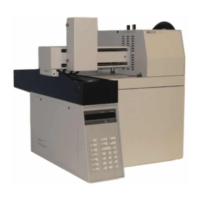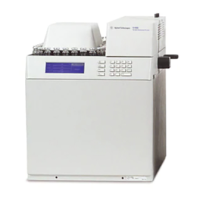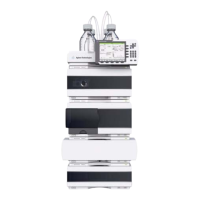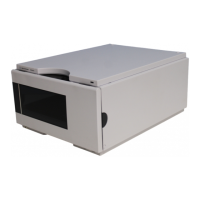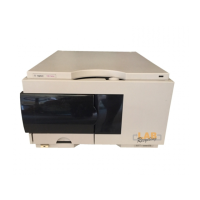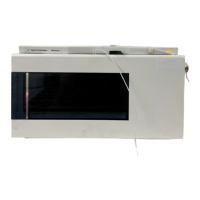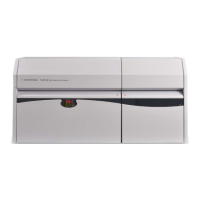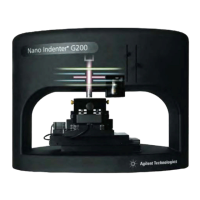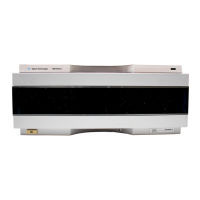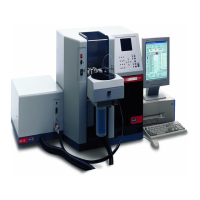119
Order online at www.agilent.com/chem/store
GC/MS Systems
• GC/MSD interface column nut
• Side/top plate O-ring (all the way around)
• Vent valve O-ring
• Calibration valve
• High vacuum gauge tube/controller fitting
• Cracked ion gauge tube (5973/5972/5971)
• Front and rear end plate O-rings
• GC/MSD interface O-ring (where the interface attaches to the vacuum manifold)
•
Diffusion pump co-seal
• Baffle adapter O-ring
•
Turbomolecular pump O-ring
•
Vespel/Graphite ferrules, when heated
Air Leaks
Air leaks are a problem for any instrument that requires a vacuum to operate. Leaks are
generally caused by vacuum seals that are damaged or not fastened correctly.
Leaks can occur in other places in the MSD, including the following:
Contamination Sources in the MSD
• Air leaks
• Cleaning solvents and materials
• Fingerprints inside the manifold
• Diffusion pump fluid
• Foreline pump oil
The action required to remove contamination depends on the type and level of
contamination. Minor contamination by water or solvents can usually be removed
by allowing the system to pump (with a flow of clean carrier gas) overnight. Serious
contamination by rough pump oil, diffusion pump fluid or fingerprints is much more
difficult to remove and may require extensive cleaning.
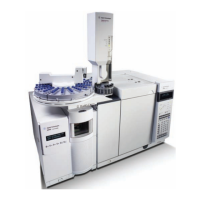
